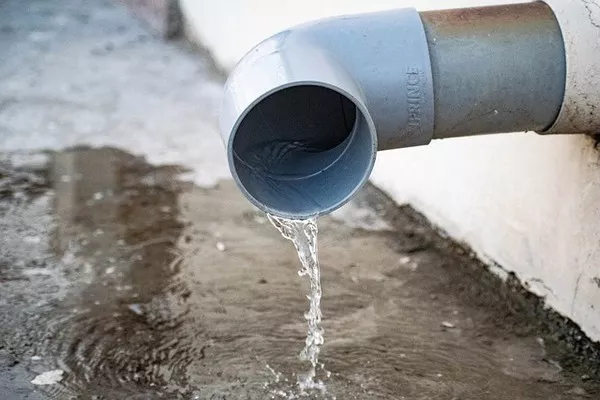Wastewater treatment plants play a pivotal role in safeguarding public health and preserving the environment by treating and purifying wastewater before its release back into natural water bodies. These facilities are essential in managing the ever-growing volumes of domestic, industrial, and agricultural wastewater generated daily. In this article, we will delve into the intricate processes that unfold within a wastewater treatment plant, shedding light on the steps involved in transforming contaminated water into a resource suitable for environmental discharge.
Primary Treatment: The First Line of Defense
The journey of wastewater treatment begins with the primary treatment phase, where the incoming wastewater undergoes physical processes to remove larger solids. Screens and grit chambers are employed to trap debris such as sticks, leaves, and stones, preventing damage to downstream equipment. Once separated, these solids are either incinerated, sent to landfills, or processed for alternative uses like fertilizers.
Secondary Treatment: Biological Alchemy
Following primary treatment, the water moves to the secondary treatment stage, where the focus shifts to the removal of dissolved and suspended organic matter. This phase primarily relies on the activity of microorganisms that consume and break down pollutants, transforming them into harmless byproducts. Activated sludge and trickling filters are common methods used to foster the growth of these microorganisms, resulting in the creation of a biological soup that aids in wastewater purification.
Aeration tanks provide a conducive environment for microorganisms to flourish, ensuring optimal conditions for the biological degradation of pollutants. This biological alchemy is a critical step in wastewater treatment, as it significantly reduces the organic content of the water, making it safer for discharge.
Tertiary Treatment: Polishing for Perfection
While secondary treatment is highly effective in purifying wastewater, tertiary treatment is often employed to further polish the water and meet stringent regulatory standards. This phase involves advanced treatment processes to remove remaining impurities, including nutrients, trace contaminants, and pathogens.
Filtration and disinfection are common techniques used during tertiary treatment. Sand and multimedia filters help eliminate any remaining suspended particles, while chemical disinfectants such as chlorine or ultraviolet (UV) light are employed to neutralize pathogens. Tertiary treatment ensures that the treated water is of high quality and poses minimal risks to public health and the environment.
Sludge Management: Turning Waste into a Resource
Throughout the treatment process, solid residues known as sludge are generated. These residuals, composed of both organic and inorganic materials, require careful management to prevent environmental harm. Wastewater treatment plants employ various methods for sludge treatment and disposal.
Anaerobic digestion is a common process used to break down organic matter in sludge, producing biogas as a valuable byproduct. The biogas can be harnessed for energy production, contributing to the sustainability of the treatment plant. Alternatively, incineration and land application are employed as methods of sludge disposal, with the latter serving as a means to utilize sludge as a nutrient-rich fertilizer for agricultural purposes.
Resource Recovery: Embracing Sustainability
Modern wastewater treatment plants are increasingly focusing on resource recovery initiatives to maximize the utility of treated water and byproducts. Nutrient-rich biosolids recovered from sludge can be utilized in agriculture, closing the loop on nutrient cycles and promoting sustainable practices.
Additionally, some wastewater treatment plants are exploring the possibility of extracting valuable resources from treated water, such as phosphorus and nitrogen, which can be repurposed for agricultural fertilizers. These initiatives not only enhance the economic viability of treatment plants but also contribute to the conservation of essential resources.
See Also Why Should Sewage Be Treated? An In-Depth Analysis
Challenges and Innovations: Navigating the Future
Despite the efficacy of wastewater treatment processes, challenges persist in ensuring the sustainability and resilience of treatment plants. Aging infrastructure, increasing populations, and emerging contaminants pose ongoing challenges to the wastewater treatment industry. However, ongoing research and technological advancements are paving the way for innovative solutions.
Advanced treatment technologies, such as membrane filtration and reverse osmosis, are becoming more prevalent, enhancing the efficiency of wastewater treatment. Additionally, the integration of artificial intelligence and data analytics is helping optimize plant operations, leading to improved energy efficiency and reduced environmental impact.
Conclusion
Wastewater treatment plants play a crucial role in safeguarding public health and preserving the environment. Through a series of well-coordinated processes encompassing primary, secondary, and tertiary treatments, these facilities transform contaminated water into a resource suitable for discharge into natural water bodies. Sludge management and resource recovery initiatives further underscore the commitment of wastewater treatment plants to environmental sustainability.
As the world faces new challenges and opportunities, continuous innovation and the adoption of advanced technologies will be key to ensuring the resilience and effectiveness of wastewater treatment processes. By embracing these advancements and maintaining a focus on sustainability, wastewater treatment plants can navigate the future and continue to play a vital role in the protection of water resources and the environment.

